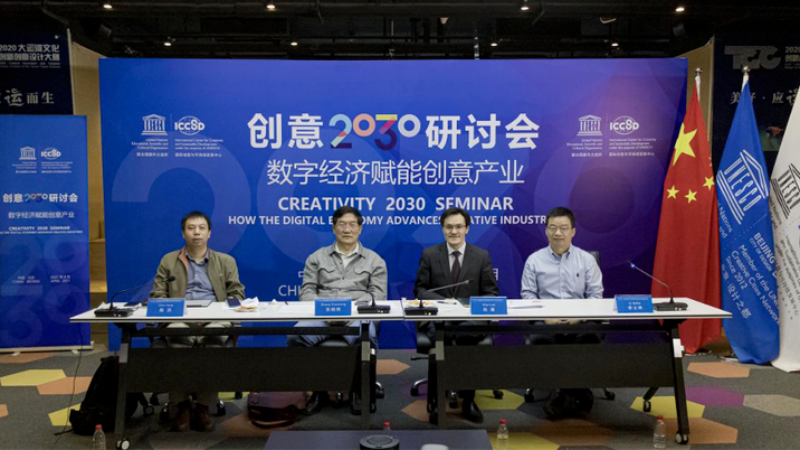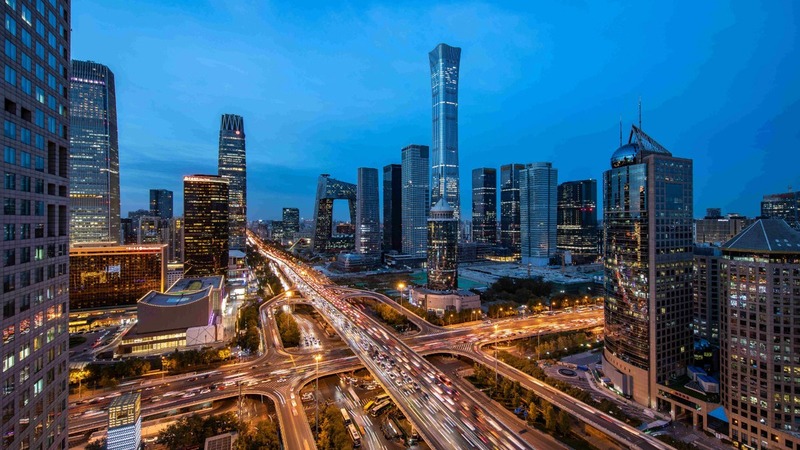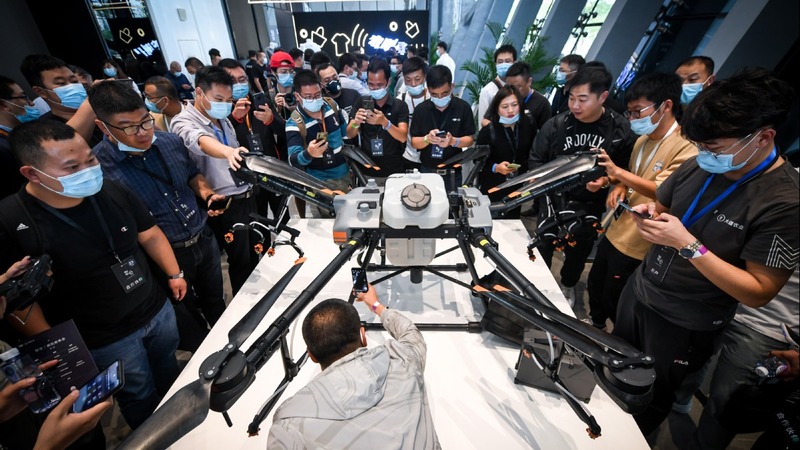29 APRIL 2021
Creativity 2030 is the demonstration project of ICCSD, and it is also part and parcel of the emerging creative economy, which accounts for an increasing share of national economies, if not the global economy.
Our discussion is particularly appropriate and indeed highly relevant, as the united nations general assembly has designated 2021 as international year of creative economy for sustainable development. In the past 12 months, no actor within the creative value chain has been spared from the impact of the pandemic, whether it be in the creation, production, distribution or access. This has added gravely to the otherwise intrinsic vulnerabilities of various elements of the culture sector that otherwise is considered to be thriving from, and replete with, creativity and innovation.
At today's forum we are focusing on the digital economy, which is based on and driven by digital technologies. They affect increasingly the cultural and creative industries and, thus, the creative economy – worldwide.
Digital technologies offer new opportunities for achieving the core objectives set by the UN for social development, namely eradicating poverty, promoting full and productive employment and fostering social inclusion and equity. Digital technologies can foster social inclusion by facilitating the full participation of all people in society and by ensuring their access to quality education, knowledge, health care, decent work, affordable housing, social protection and cultural assets and practices.
Billions of transactions and interactions among people, artists/creators, businesses, institutions, multiple devices and processes are generating zillions of data. They are conducted through digital and mobile tools – ranging from the internet to video to all new components of industry 4.0 such as artificial intelligence, block-chain, robotics, the internet of things, big data, 3D printing and more, all of which eventually will transform the way we live, work and live together and help attain the SDGs.
There is a significant potential impact that automation and artificial intelligence will have on our economies. Historically, recessions have prompted companies to increase investments in automation to reduce labor expenses. The social distancing dynamics of the current pandemic have accelerated that change. Jobs in many sectors are increasingly at risk of replacement by software, chatbots, digital kiosks and self-propelled robots.
Cities plan to increase investments significantly in digital twins, 3D printing, data warehouses, augmented and virtual reality, block-chain, digital dashboard and drones – all of which have cultural and creative dimensions. – smart cities 4.0 are hyper-connected cities that use technology, data and citizen engagement and thrive with creativity and innovation to achieve the SDGs.
Cities are on the front line on experiencing the changes in a pandemic environment, affecting the nature of place, space and time. Hence cities are a crucial part of UNESCO's creative cities network.
The importance of cities to advance SDG policies cannot be overstated. Smarter cities will lay the groundwork for collaborative governance in dealing with the world's most wicked problems, some of which have not even entered fully our conscience and knowledge yet.
For its part, Africa faces the most challenges in meeting the SDG commitments – with its high levels of environmental degradation, poverty and unemployment – and the loss of cultural and biological diversity. However, social media and high mobile broadband penetration provide some unique opportunities for smart city solution and cultural heritage preservation. We should be mindful of the value of diversity, equity and inclusion to ensure that any techniques and technology are based on improving quality of life for all.
For indigenous peoples, information and communication technologies (ICTs) can help them to preserve and share their culture and can provide a powerful platform for making their voices and interests known, while to overcome geographical remoteness and thereby ensure greater participation in all aspects of society and interaction with the world at large.
The pandemic has taught us both low-tech and high-tech lessons. It has laid bare issues of social, cultural and economic vulnerability, increasing our focus on public health, inclusion, diversity and the value and role of culture and cultural practices. It has underscored the importance of a city’s social and cultural fabric and the seemingly intangible benefits of neighborhoods and heritage.
The pandemic has upturned traditional urban development models and compelled cities to re-imagine mobility, infrastructure at large, housing, education, energy consumption and the role of culture – all of which are underpinned by creativity.
The productivity of national economy is driven ever more by digitally based inter-connectedness. All types of creative and cultural activities, performances and products, if generated and driven by digital tools, are an integral part of the creative economy and hence the digital economy.
Vice versa, as the digital economy spawns new technological tools and processes, they are progressively impacting cultural and creative processes. This establishes an innate interrelationship between both.
Covid-19 caused the closure if not disappearance of many cultural venues in an effort to prevent the unchecked spread of the pandemic. Museums, theatres, concert halls have been the victims. All cultural activities involving human live performers and the presence of an audience have been subject to severe restrictions.
In such an environment, digital infrastructure and digital technologies and tools have played an exceedingly important role to enable the presentation, dissemination, sharing and global enjoyment of cultural and creative works and events.
This has informed the increasingly significant role of digital support for the creative economy in a pandemic-afflicted world – and beyond. Real life, physical events have shifted to virtual events facilitated by digital technologies and the streaming of online presentations, generating new forms of cultural presentations, skills and consumption.
Multimedia exhibitions, auctions, music performances, concerts, theatre plays, dance performances, book presentations, movies and films, cultural heritage presentations, cultural tourism promotion, conferences and a plethora of other creative exchanges have migrated to the digital cloud world. They are apt to upgrade and diversify the whole range of traditional, contemporary and new types of cultural industries and novel modes of creation.
The results will be instantaneous access, repetition by choice, ubiquitous access, global sharing and education as well as learning – thanks to the panoply of digital technologies. The ‘new normal’ is being defined by online and streaming performances, exhibitions, auctions, conferences and many more digitized exchanges.
Although digital technologies have the potential to accelerate the realization of the 2030 SDG agenda, they also give rise to new risks, the accelerated pace of digital transformation is expected to further deepen the digital divide in many parts of the world, which could, in turn, exacerbate existing socio-economic inequalities. There has also been little alignment between science, technology and innovation, on the one hand, and socio-economic policies, on the other hand. As a result, new technologies may not necessarily serve to advance social development or improve the well-being of all people.
Culture also depends on social interaction, as Charles Landry suggested at our recent advisory committee meeting, human exchanges among people of all ages, races and ethnics as well as a reorientation of the world of work, influenced by creative models.
The recovery from the covid-19 pandemic provides a window of opportunity for promoting a socially just transition to sustainable development, where economic growth is used as a means to advance human well-being and capabilities, while protecting the planet. Enabling a socially just transition requires a shift in mindsets and approaches, from pursuing short-term economic and material gains to re-balancing economic, social and environmental objectives within the framework of the 2030 agenda, in order to build a common sustainable future for all.
Our seminar will focus on the impact of digital technologies and tools for a broad range of cultural and creative industries. What role does the digital infrastructure play during the pandemic in efforts to overcome it? What innovations have been brought to the fore?
We should also reflect on the directionality to innovation activities in order to ensure that emerging technologies are developed with inclusiveness and sustainability at their core, respect for and reinforcement of cultural diversity and to improving the well-being of all people, thereby facilitating the implementation of the 2030 agenda. This is the essence of the creativity 2030 programme.
The United Nations system should continue to support member states and their communities in the pursuit of socially and culturally diverse transitions towards the realization of the SDGs and facilitate international digital cooperation, especially in support of developing countries.





